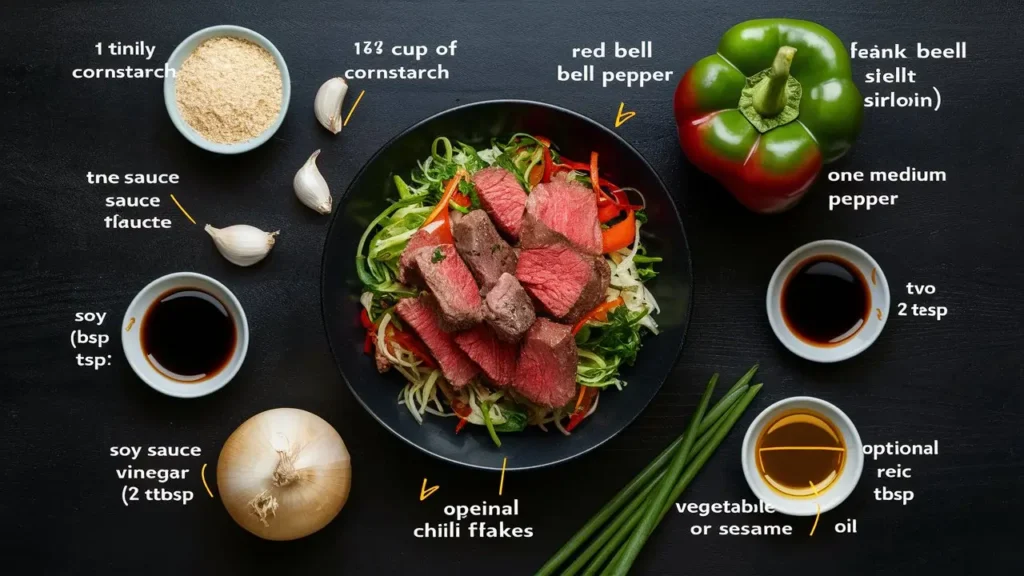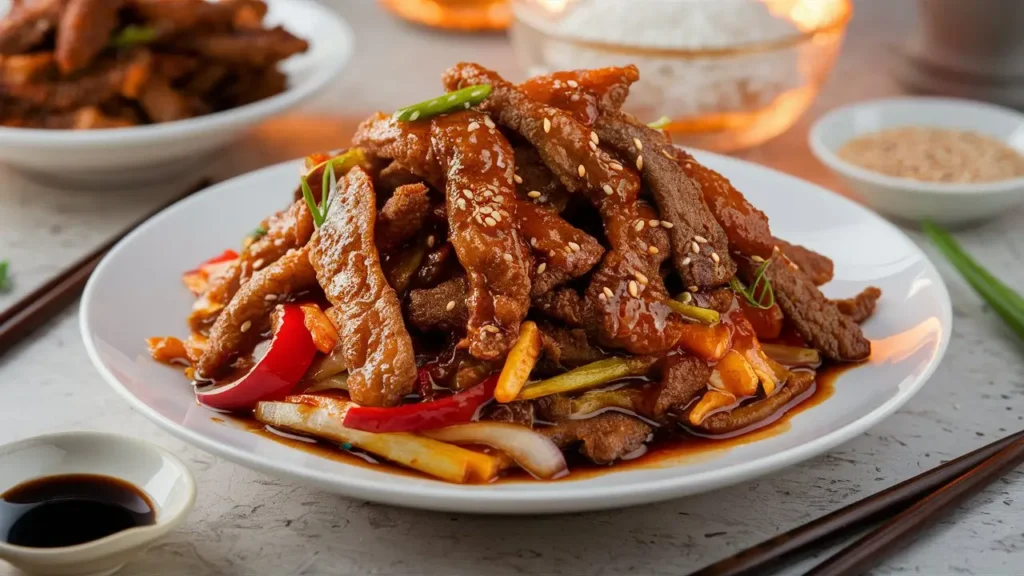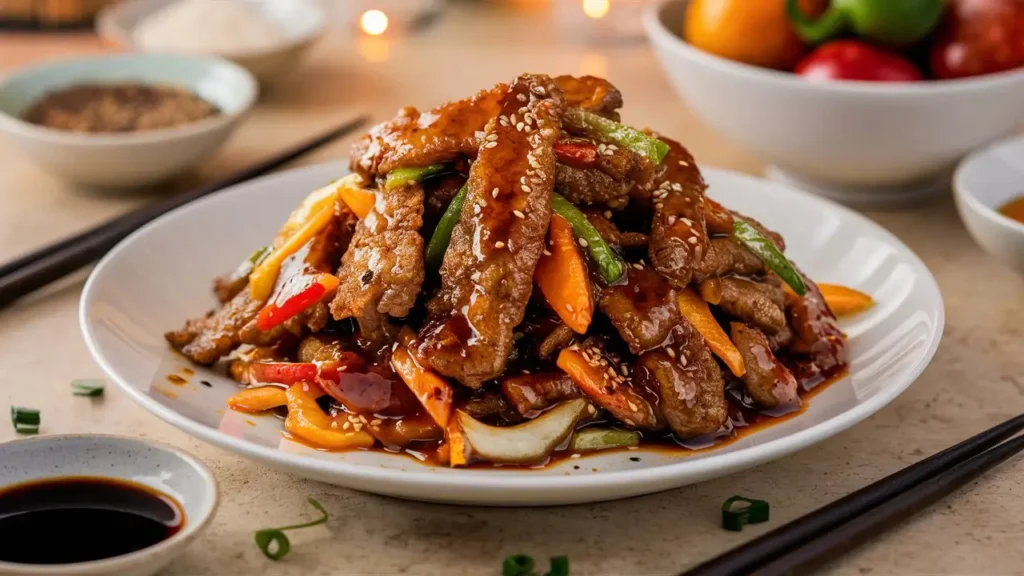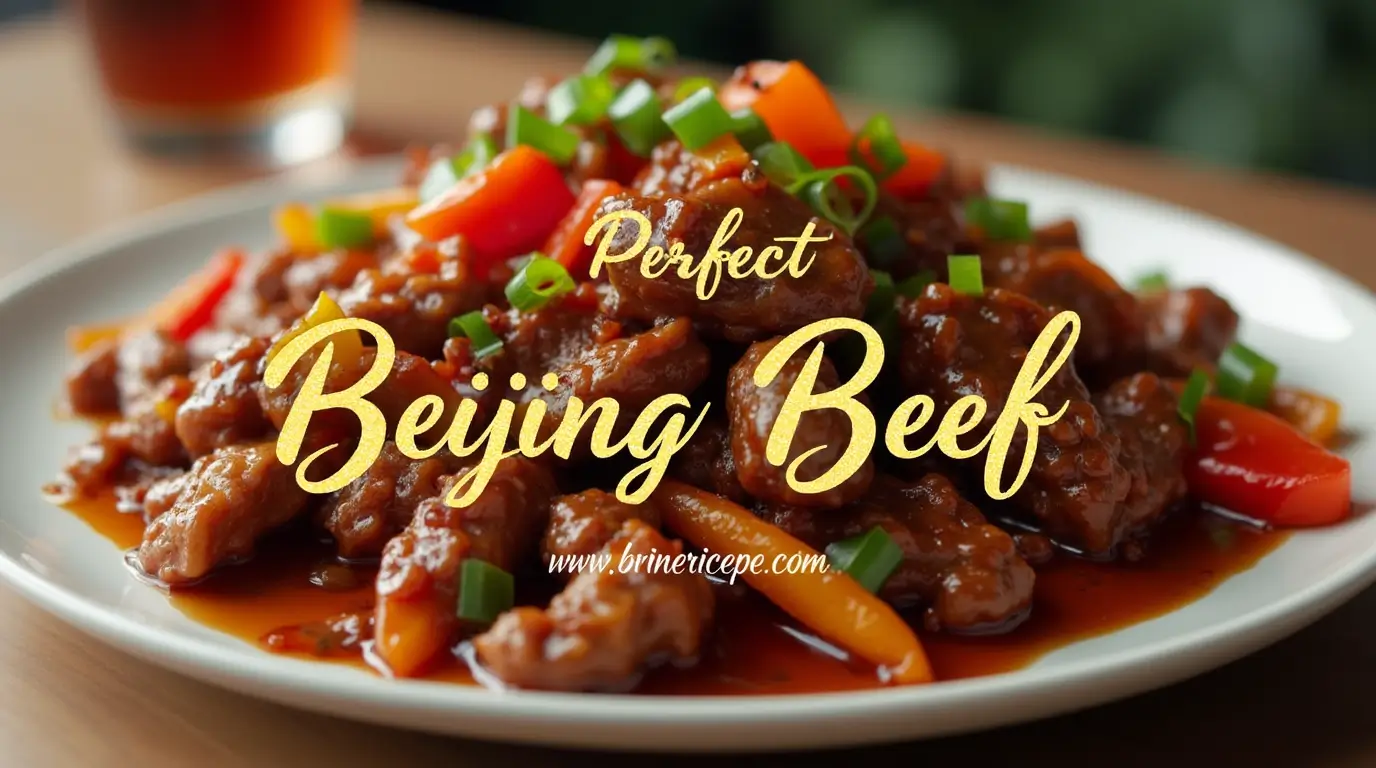If you’re someone who appreciates the art of crafting flavorful dishes or just loves recreating restaurant classics at home, Beijing Beef deserves a spot on your table. A symphony of crispy beef strips, vibrant vegetables, and a sweet-spicy glaze, this dish strikes a perfect balance between indulgence and comfort. In this guide, you’ll uncover not only how to make a restaurant-quality Beijing Beef recipe but also tips to elevate your cooking game, all while staying mindful of sustainable habits in your kitchen.
What Is Beijing Beef?
A Takeout Favorite with a Twist
Beijing Beef has secured its place as one of the most beloved dishes from Panda Express. But what sets it apart from other Chinese-inspired favorites is its harmony of textures and flavors. Picture this: tender beef coated in a crispy layer, tossed with crunchy bell peppers and onions, and enveloped in a tangy-sweet sauce with just the right hint of spice.
How Beijing Beef Stands Out
If you’re comparing it to dishes like Mongolian Beef or Orange Chicken, Beijing Beef leans more toward bold tanginess than sweetness. While Mongolian Beef boasts a savory soy-based glaze, this dish dances between the vibrant notes of vinegar and sugar. It’s a unique profile that’s both familiar and exciting.
Ingredients for the Perfect Beijing Beef Recipe
To achieve the perfect balance of flavor and texture, you’ll need the right ingredients. Here’s a breakdown:
| Ingredient | Quantity | Notes |
| Beef (flank or sirloin) | 1 lb | Thinly sliced into strips. |
| Cornstarch | ½ cup | Ensures crispy texture. |
| Bell peppers (red and green) | 1 each | Adds a pop of color and crunch. |
| Onion | 1 medium | Provides sweetness and depth. |
| Garlic | 2 cloves | Brings aromatic richness. |
| Soy sauce | 3 tbsp | Base for the sauce. |
| Hoisin sauce | 2 tbsp | Adds depth and umami. |
| Rice vinegar | 2 tbsp | For that signature tangy kick. |
| Sugar | 2 tbsp | Balances out the sour notes. |
| Red chili flakes | 1 tsp | Optional, for a hint of heat. |
| Oil (vegetable or sesame) | As needed | For frying and stir-frying. |
Pro Tip: Always prep your ingredients ahead of time to streamline the cooking process. This will save you time and ensure your dish is perfectly executed.

Step-by-Step Instructions to Master Beijing Beef
1. Preparing the Beef
- Start by slicing the beef thinly against the grain. This ensures tenderness.
- Toss the beef strips in cornstarch, ensuring each piece is evenly coated.
- Heat oil in a skillet or wok over medium-high heat and fry the beef in small batches. This prevents overcrowding and keeps the beef crispy. Once done, set aside.
2. Crafting the Sauce
- In a bowl, whisk together soy sauce, hoisin sauce, rice vinegar, sugar, and red chili flakes.
- Adjust the ratios to suit your palate. Prefer a spicier dish? Add more chili flakes. Like it sweeter? Increase the sugar slightly.
3. Stir-Frying the Vegetables
- Heat a tablespoon of oil in the same wok.
- Add minced garlic, followed by sliced onions and bell peppers. Stir-fry for 2-3 minutes until slightly tender yet crunchy.
4. Bringing It All Together
- Return the fried beef to the wok with the vegetables.
- Pour the sauce over the mixture and toss to coat everything evenly.
- Cook for another 2-3 minutes, allowing the sauce to thicken and cling to the ingredients.
Serving Suggestion: Pair your Beijing Beef with steamed jasmine rice or fried noodles for a complete meal.
Tips for Perfecting Your Beijing Beef
Achieving the Perfect Texture
- Use a light hand with the cornstarch to avoid a heavy coating.
- Maintain the oil at a consistent medium-high temperature while frying to achieve crispiness without greasiness.
Maximizing Flavor
- Use fresh, high-quality ingredients. The freshness of your vegetables and the cut of your beef make a noticeable difference.
- Toast red chili flakes briefly before adding them to the sauce to enhance their aroma and spice.

Eco-Friendly Kitchen Habits
Cooking isn’t just about the flavors you create; it’s also about the impact you make. Here are some tips to make your kitchen more sustainable:
- Reusable Tools: Opt for silicone mats instead of parchment paper and reusable storage bags for leftovers.
- Mindful Sourcing: Buy local and seasonal produce to support sustainability.
- Minimize Food Waste: Repurpose leftovers creatively—use any extra beef and sauce in wraps or salads the next day.

Frequently Asked Questions About Beijing Beef
What Is in the Beijing Beef Sauce?
The sauce is a perfect blend of soy sauce, hoisin sauce, rice vinegar, sugar, and chili flakes. Together, they create a flavor that’s sweet, tangy, and slightly spicy.
Is Beijing Beef Healthy?
While Beijing Beef is undeniably delicious, it’s typically fried, which adds calories. To make a healthier version, consider air-frying the beef or using less oil in a pan.
Is Beijing Beef the Same as Mongolian Beef?
Not at all. While both are popular Chinese-inspired dishes, Mongolian Beef has a more savory, soy-based flavor profile, whereas Beijing Beef leans toward a sweet and tangy sauce.
Can I Substitute the Beef with Chicken?
Absolutely! Swap out the beef for chicken strips to create a lighter yet equally flavorful variation of this dish.
How Do I Make Beef Taste Like It’s From a Chinese Restaurant?
The secret lies in marinating the meat with a combination of soy sauce, cornstarch, and a pinch of baking soda. This tenderizes the meat and mimics the texture you find in restaurant dishes.
Conclusion
Beijing Beef is more than just a dish—it’s a culinary experience that combines bold flavors, satisfying textures, and a touch of nostalgia. Whether you’re recreating it for a weeknight dinner or sharing it with friends at a gathering, this recipe is sure to impress.
Now that you have all the tools and tips to master Beijing Beef, why not give it a try? Head to your kitchen, follow this guide, and experience the magic firsthand. Don’t forget to share your creation with others and inspire them to try this delicious dish too.
For more recipes and tips on sustainable cooking, visit Brine Ricepe and embark on your journey to flavorful, eco-conscious meals today!

